Disciples of Narayana Guru: Continuing the Journey
Narayana Guru was more than just a visionary leader; he was a dedicated mentor to many followers who carried forward his mission of spiritual and philosophical enlightenment, social reform, and educational empowerment. Let’s get to know some of these extraordinary individuals, both renunciates and householders, whose lives were deeply influenced by Narayana Guru.
Nataraja Guru
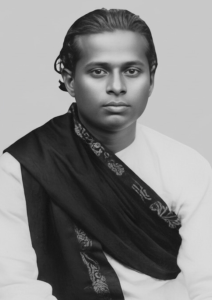
Nataraja Guru, born P. Natarajan in Bangalore on February 18, 1895, was the son of Palpu, a dedicated doctor and the founder of the Sree Narayana Dharma Paripalana (SNDP) Yogam. Growing up in a family deeply committed to social reform, Natarajan pursued an excellent education, earning a Master’s degree from Madras Presidency College. His thirst for knowledge led him abroad, where he obtained a Doctorate in Educational Psychology from the Sorbonne in Paris and shared his expertise by teaching at the Quaker International School in Geneva.
In 1923, Nataraja Guru established the Narayana Gurukula, an educational institution dedicated to promoting Narayana Guru’s teachings. This foundational step was crucial in creating a space where Guru’s philosophies could be nurtured and disseminated. After founding the Gurukula, Nataraja Guru continued his academic pursuits in Europe. Under his leadership, the Narayana Gurukula not only expanded its reach within India but also established branches worldwide, spreading Guru’s message across the globe.
Nataraja Guru devoted himself to translating and commenting on Narayana Guru’s major works, making these profound teachings accessible to a broader audience. His most significant contribution, “An Integrated Science of the Absolute,” bridges Eastern and Western philosophical, scientific, and mystical traditions, showcasing the depth and universality of his mentor’s wisdom. Through this work, he provided a comprehensive framework that resonates with diverse cultural and intellectual backgrounds.
His efforts ensured that Narayana Guru’s philosophies were not only preserved but also adapted to contemporary contexts, allowing them to remain relevant in a rapidly changing world. Nataraja Guru’s global approach facilitated a deeper understanding of social justice and spiritual unity, making Guru’s vision accessible to scholars and seekers alike. Today, the Narayana Gurukula stands as a testament to Nataraja Guru’s dedication, continuing to inspire generations around the world with its commitment to education, equality, and spiritual enlightenment.
Bodhananda Swami
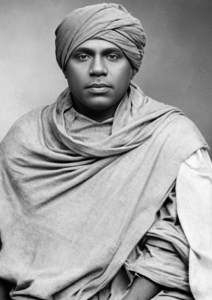
Born in 1883 in Chirakkal village, Thrissur district, Bodhananda Swami came from a middle-class family with a strong sense of justice. From an early age, he opposed societal inequalities and was passionate about eradicating untouchability and caste discrimination. His journey took him across North India, where he embraced the Sanyasin life at Jyothir Mutt in Kasi.
Upon returning to Kerala, Bodhananda Swami became a fervent activist against caste-based oppression. He even challenged idol worship practices, leading agitations to promote equality. A turning point came when he attended the idol installation at the Jagannatha Temple. Initially, he opposed the event, urging the youth to stay away. However, a heartfelt conversation with Narayana Guru changed his perspective. The Guru explained the importance of temples and idols in fostering spiritual unity, leading Bodhananda to support the event.
In 1912, Narayana Guru accepted Bodhananda as his Sanyasi disciple, entrusting him with significant responsibilities. Bodhananda played a crucial role in establishing the Narayana Gurukulam in Neelagiri alongside Nataraja Guru. He also founded the Cochin National Bank to boost the economic status of marginalized communities. Additionally, his publication, “Sree Narayana Dharmam,” codified Guru’s teachings on caste, religion, morality, celibacy, and household duties. Unfortunately, Bodhananda Swami passed away just two days after Guru in 1928, leaving behind a legacy of unwavering dedication to social upliftment.
Sivalingadasa Swami
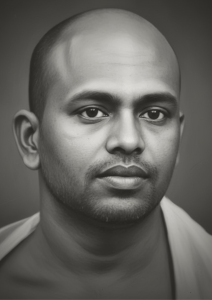
Sivalingadasa Swami, born in 1859 in an orthodox Nair family in Aruvippuram, was one of Narayana Guru’s earliest and most prominent disciples. His first encounter with Guru happened when Guru was meditating in a cave near the Neyyar River. Intrigued by Guru’s teachings, Sivalingadasa sought further education in Sanskrit under Perunelli Krishnan Vaidyar.
In 1905, Ayappan Pillai embraced the ascetic life, becoming Sivalingadasa Swami. He formed a close friendship with Kumaran Asan, the celebrated Malayalam poet, and together they supported Guru’s mission. Sivalingadasa Swami was instrumental in building the Sivagiri hermitage in Varkala, providing a serene space for spiritual practice and community gatherings.
He dedicated his life to serving various ashrams and temples, ensuring that Guru’s vision was implemented across Kerala. In Trichur’s Peringottukara Ashram, he established a Sanskrit school, nurturing future generations with both spiritual and academic knowledge. Sivalingadasa Swami’s literary contributions, including “Vedanthasaravali,” “Sharadhashtakam,” and “Sree Narayana Guruvarya Panchakam,” remain cherished works that reflect his deep spiritual insights. He attained Samadhi in 1919, leaving behind a rich legacy of scholarship and devotion.
Chaithanya Swami
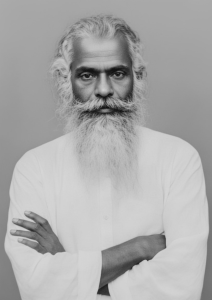
Chaithanya Swami, the second Sanyasin disciple ordained by Narayana Guru, had an unconventional path. Born as Narayana Pillai in Varkala in 1877, he lacked formal education but possessed exceptional administrative skills and a talent for connecting with people. Initially sent to Guru by Chattambi Swamikal, Chaithanya Swami quickly earned Guru’s trust.
Tasked with overseeing the construction of several temples, including the Thalaserry Jagannatha Temple and the Kozhikkode Sree Khanadeswara Temple, Chaithanya Swami showcased his knack for organization and leadership. He also managed the Alwaye Adwaita Ashram’s administrative affairs and supervised the Sanskrit school, ensuring that educational initiatives thrived.
In Kozhikkode, he established the Sree Narayana Ashram at West Hill, expanding Guru’s humanitarian efforts. Chaithanya Swami’s dedication to spreading Guru’s message continued until his passing in 1953. His efforts not only built physical structures but also fortified the spiritual and social foundations of the communities he served.
Dharma Theerthar Swami
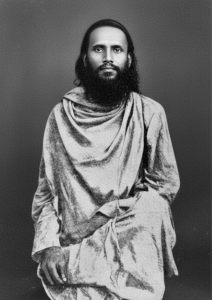
Before embracing sainthood, Dharma Theerthar Swami, originally named Parameswara Menon, was a skilled lawyer known for his fight against untouchability and other oppressive practices. His activism made him a respected figure, and through Bodhananda Swami, he met Narayana Guru.
Impressed by Dharma Theerthar’s dedication, Guru accepted him as his first Sanyasin disciple with a college degree. Renaming him Dharma Theerthar, Guru entrusted him with critical roles, including acting as a translator during travels and advising on legal matters for the Sree Narayana Dharma Sangham. His legal expertise was invaluable in registering the Sangham and advocating for progressive reforms.
Dharma Theerthar Swami was passionate about preserving and promoting Guru’s literary works. He took the initiative to collect, publish, and interpret Guru’s teachings, ensuring that future generations could access and understand them. His book, “The Prophet of Peace,” was the first English work dedicated to Guru, broadening the reach of Guru’s message beyond Kerala. Dharma Theerthar Swami’s contributions laid a strong foundation for the continued spread of Guru’s philosophies.
Satyavrida Swami
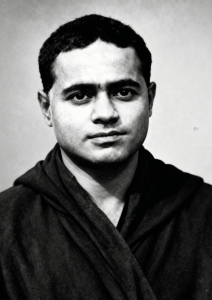
Satyavrida Swami, born Ayyappan Pillai into an upper-class Nair family, found himself drawn to Narayana Guru’s principles of equality and social justice. In 1916, he left his comfortable life to join the Adwaita Ashram, embracing the ascetic lifestyle. Guru recognized his honesty and straightforwardness, renaming him Satyavridan.
A brilliant scholar and a captivating orator, Satyavrida Swami was known for his ability to engage and inspire large audiences. In 1918, he accompanied Guru to Ceylon (now Sri Lanka), where he spent three years establishing evening schools, providing education to marginalized communities. His efforts were instrumental in promoting Guru’s ideals abroad, making education accessible to those who needed it most.
Satyavrida Swami was a staunch advocate against the caste system, tirelessly working to dismantle entrenched social barriers. His untimely death in 1928 deeply saddened Guru, highlighting the profound bond and mutual respect they shared. Satyavrida Swami’s legacy lives on through his contributions to education and social reform, embodying Guru’s vision of a just society.
Govindananda Swami

Govindananda Swami hailed from Mulankadu near Ernakulam and was introduced to Guru’s teachings by Bodhananda Swami. Choosing to leave his career as a police officer, he fully embraced the path of a Sanyasin. After Bodhananda Swami’s passing, Govindananda Swami became the head of the Sivagiri Mutt, the spiritual and administrative center established by Guru.
In Kancheepuram, he founded the Sree Narayana Ashram on land donated by a devoted follower, extending Guru’s influence into Tamil Nadu. Govindananda Swami was a global ambassador for Guru’s teachings, traveling to Japan, Malaya, and Burma to spread the message of social equality and spiritual unity. His efforts helped establish a broader international presence for Guru’s movement.
Living to the remarkable age of 105, Govindananda Swami’s long life was a testament to his dedication. He played a significant role in expanding the Sivagiri Mutt’s activities, ensuring that Guru’s principles continued to inspire and uplift communities both locally and internationally.
Atmananda Swami
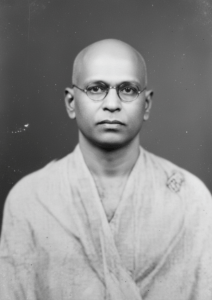
Rama Panicker, known later as Atmananda Swami, was a polymath with expertise in Sanskrit, astrology, philosophy, and Ayurveda. He initially worked as a Sanskrit teacher at the Vidhyarthi Chinthamani Sanskrit School in Tellicherry. His meeting with Narayana Guru marked a turning point in his life. Impressed by his knowledge, Guru invited him to teach at the Adwaita Ashram’s Sanskrit school, where he eventually became the Headmaster.
After embracing the Sanyasin life, Rama Panicker became Atmananda Swami. He joined Govindananda Swami at the Kancheepuram Ashram, where he played a key role in enhancing the Sree Narayana Seva Ashram’s initiatives. Atmananda Swami was also a prolific writer, authoring poems and books that delved deep into Guru’s philosophies. His work, “Sree Narayana Dharma,” is celebrated for providing profound insights into Guru’s teachings.
Atmananda Swami remained active in his humanitarian efforts until his passing in 1969 at the age of 100. His scholarly contributions and unwavering commitment to Guru’s mission have left an indelible mark on the spiritual and educational landscape of Kerala.
Sankarananda Swami
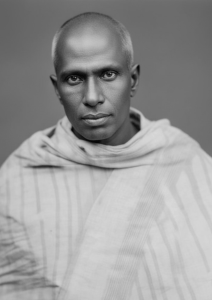
Sankarananda Swami, originally named Sankaran, embarked on a spiritual journey driven by a sense of disillusionment with his family life. Traveling to various holy sites across South India, he eventually arrived at Brahmananda Shiva Yogi’s ashram in Palakkad. Seeking deeper meaning, he visited Peringottukara Ashram, where he met Narayana Guru.
After sharing his personal struggles with Guru, Sankaran found clarity and purpose. Embracing the ascetic life, Guru renamed him Sankarananda Swami. He took on significant administrative roles, managing the Adwait Ashram and later leading the Sivagiri Mutt. Sankarananda Swami was passionate about preserving Guru’s literary works, overseeing the publication of periodicals like “Navajeevan” and “Sivagiri.”
His dedication ensured that Guru’s teachings remained accessible and relevant. Sankarananda Swami’s efforts in administration and publication played a crucial role in maintaining the momentum of Guru’s movement, fostering a community committed to social and spiritual upliftment.
Mambalam Vidyananda Swami
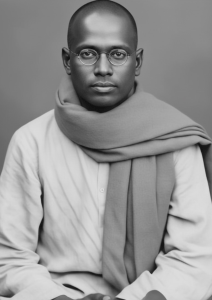
Mambalam Vidyananda Swami, born Ramankutty in Kavalam, Kuttanadu, came from a family of medical practitioners. After the tragic loss of his three uncles, Ramankutty faced deep personal turmoil, leading him on a quest for solace. His journey brought him to the Adwaita Ashram, where Narayana Guru offered him a place of refuge and purpose.
At the ashram, Ramankutty honed his skills in Sanskrit and embraced the monkhood, receiving the name Vidyananda Swami. Following Guru’s passing, he moved to Kancheepuram’s Sree Narayana Seva Ashram and later to Mambalam, where he established the Sree Narayana Mission. His work extended beyond spiritual teachings; he founded an infirmary that provided much-needed medical care to the poor, embodying Guru’s commitment to holistic welfare.
Vidyananda Swami was also a respected scholar, interpreting Guru’s “Darsanamala” as “Dheedhidi” (Ray) and making it a key reference for future scholars. His articles and publications continued to explore and promote Guru’s philosophies, ensuring that his teachings remained vibrant and influential. Mambalam Vidyananda Swami’s blend of spiritual guidance and practical service exemplifies the true spirit of Narayana Guru’s legacy.
Swami Aanantha Theerthar
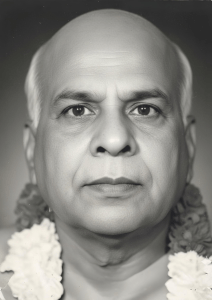
Swami Aanantha Theerthar, born Anantha Shenoy into a wealthy Gowdasaraswath Brahmin family in Thalassery, was Narayana Guru’s last disciple. Despite holding a B.Sc. (Hon.) degree in Physics from Madras University, Anantha chose to dedicate his life to public service over a promising academic career.
In 1926, Anantha joined the Sabari Ashram, where he first met Narayana Guru in Coimbatore. Impressed by his dedication, Guru accepted him as a Sanyasin in August 1928, renaming him Anantha Theerthar. Despite facing continuous threats from upper-caste adversaries, Anantha remained steadfast in his mission to uplift the lower classes.
He established the Sree Narayana School and a hostel for Harijan children in Payyannur, providing education and shelter to those who needed it most. Swami Aanantha Theerthar’s commitment to education and social welfare reflected Guru’s teachings, making a tangible difference in the lives of countless individuals. His perseverance and dedication ensured that Guru’s mission continued to thrive even after his passing.
Swami Ernest Kirk
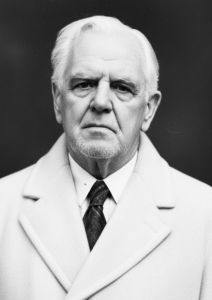
Swami Ernest Kirk holds the unique distinction of being the only foreign Sanyasin disciple of Narayana Guru. An American, Ernest was drawn to India’s spiritual traditions and joined Annie Besant’s Theosophical Society, traveling across sacred sites in India. His journey led him to Sivagiri, where he met Narayana Guru and felt an immediate connection to Guru’s message of equality and social justice.
Eager to dedicate his life to Guru’s path, Ernest expressed his desire to stay at Sivagiri. Guru welcomed him warmly, and Ernest became a key figure in the Sivagiri Free Industrial and Agricultural Gurukulam project. His vision was to link agriculture and industry with education, promoting sustainable and practical solutions for community development.
Ernest Kirk embraced the Sanyasin life but retained his original name, reflecting his unique position as a bridge between cultures. After Guru’s passing, he moved to Coimbatore, where he founded the Sree Narayana Ashram and launched the publication “Life,” which emphasized Guru’s philosophies. Swami Ernest Kirk’s international perspective and unwavering commitment helped spread Guru’s teachings beyond India’s borders, enriching the global understanding of his mission.
Mahakavi Kumaran Asan (1871-1924)
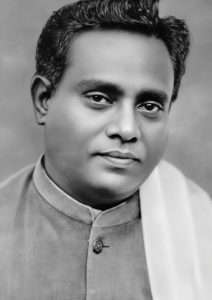
Kumaran Asan, lovingly known as Mahakavi Kumaran Asan, was a trailblazer in Malayalam literature and a passionate social reformer. Born on April 12, 1871, in Kayikkara village, Travancore, into an Ezhava family, Asan rose to prominence alongside other literary giants like Vallathol Narayana Menon and Ulloor S. Parameswara Iyer, forming Kerala’s revered triumvirate of poets.
A devoted disciple of Sree Narayana Guru, Asan intertwined his literary pursuits with his commitment to social change. He believed that poetry could be a powerful tool for inspiring moral and spiritual awakening. This belief led him to shift Malayalam poetry from abstract metaphysical themes to more relatable and heartfelt expressions. His seminal work, “Veena Poovu” (The Fallen Flower), published in 1907, beautifully captures this transformation and remains a beloved classic in Malayalam literature.
Asan’s repertoire includes epic narratives like “Buddha Charitha” and “Balaramayanam”, alongside poignant poems such as “Nalini,” “Leela,” “Karuna,” and “Chandaalabhikshuki.” Each piece reflects his deep empathy and unwavering dedication to social justice. One of his most touching works, “Prarodanam,” serves as an elegy for his friend and grammarian A. R. Raja Raja Varma, showcasing his ability to blend personal emotion with broader social themes.
Beyond his literary achievements, Asan was a key player in the social reform movements of his time. He took on the role of secretary for the Sree Narayana Dharma Paripalana Yogam (SNDP), an organization founded by Narayana Guru to fight caste oppression and promote education and equality. In 1913, Asan was elected to the Sree Moolam Popular Assembly, where he continued his advocacy for social change. Additionally, he founded and edited “Vivekodayam,” a prominent literary journal that became a voice for progressive ideas and social reform.
Tragically, Asan’s life was cut short on January 16, 1924, when he perished in a boat accident on the Pallana River in Alappuzha. However, his legacy endures through the Kumaran Asan National Institute of Culture (KANIC) in Thonnakkal, established by the Kerala Government in 1958. Asan’s blend of poetic brilliance and relentless pursuit of social justice continues to inspire generations, making him a lasting symbol of literary excellence and transformative social change in Kerala.
Dr. Padmanabhan Palpu (1863-1950)
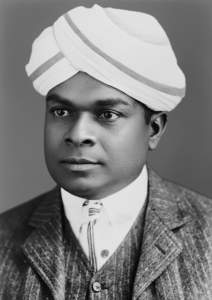
Dr. Padmanabhan Palpu stands as a monumental figure in Kerala’s history, often hailed as the “political father” of the Ezhava community. Born on November 2, 1863, in Petta, Thiruvananthapuram, Palpu faced significant challenges from the start. Despite topping the medical entrance examination, his Ezhava background barred him from admission to Travancore Medical College—a setback that only fueled his determination.
Undeterred by discrimination, Palpu pursued his medical education at Madras Medical College and furthered his studies in London and Cambridge. His perseverance paid off when he became the Chief Medical Officer of Mysore State, earning a prestigious position that surpassed even the Travancore Diwan in salary. Palpu’s journey from exclusion to leadership exemplifies his resilience and commitment to breaking societal barriers.
Palpu’s most impactful contribution was the founding of the Sree Narayana Dharma Paripalana Yogam (SNDP) in 1903, with Sree Narayana Guru as its first president. The SNDP aimed to dismantle the caste system and promote the ethos of “one caste, one religion, one god,” fostering a spirit of equality and unity among all communities. Under Palpu’s leadership, the SNDP became a formidable force in Kerala’s social reform landscape.
His advocacy for social equality was marked by strategic initiatives, including organizing influential petitions. In 1891, Palpu was the third signatory of the “Malayali Memorial,” and in 1896, he spearheaded a petition signed by 13,176 Ezhavas, demanding access to government schools and public service jobs. These actions were pioneering efforts in using organized petitions to drive social change in Travancore, setting a precedent for future movements.
Dr. Palpu’s legacy extends through his family, with his son, Nataraja Guru, continuing his mission as a successor to Narayana Guru. Palpu’s life and work have also inspired literary works, such as Sajil Sreedhar’s novel “Athmasourabham,” which delves into his relentless pursuit of justice and equality. Dr. Padmanabhan Palpu remains a revered icon in Kerala, remembered for his unwavering dedication to social justice and his pivotal role in the region’s reformation movement.
Sahodaran Ayyappan (1889-1968)
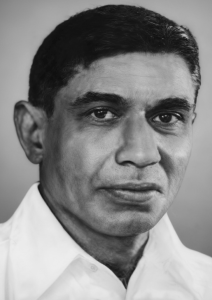
Sahodaran Ayyappan, born Kumbalathuparambu Ayyappan on August 21, 1889, in Cherai, Vypin Island, was a dynamic force in Kerala’s social reform movement. Coming from an aristocratic Ezhava family of Ayurvedic physicians, Ayyappan was deeply influenced by the teachings of Sree Narayana Guru, which shaped his lifelong mission for social equality and rationalism.
One of Ayyappan’s most groundbreaking initiatives was the Misra Bhojanam (community feast) in 1917. This event brought together people from all castes, including the Pulaya community, who were considered untouchables at the time. By dining together, Ayyappan challenged entrenched caste barriers and promoted the idea of equality. This bold move earned him the nickname “Pulaya Ayyappan,” a title he embraced with pride.
Determined to further his vision, Ayyappan established the Sahodara Sangham (Brotherhood Association) and launched the journal “Sahodaran,” both of which became platforms for advocating social justice and dismantling caste prejudices. As a rationalist, he took Narayana Guru’s famous slogan, “One Caste, One Religion, One God for Mankind,” and evolved it to “No Caste, No Religion, No God for Mankind,” reflecting his commitment to a society free from social hierarchies and superstitions.
Ayyappan didn’t just limit his efforts to social reform; he also ventured into journalism and politics. He founded and edited “Yukthivadi” (The Rationalist) magazine, where he penned six poetry collections and numerous articles promoting rational thought and scientific temper. His political journey saw him serve in the Cochin Legislative Council from 1928 to 1949 and later as a minister in both the Cochin and Travancore-Cochin governments. Despite his political roles, Ayyappan remained steadfast in his principles, often resigning from positions that conflicted with his reformist activities.
His contributions have been immortalized through various institutions named in his honor, including the Sahodaran Ayyappan Memorial in Cherai and several educational establishments. In 1996, his statue was unveiled in Kochi by President Shankar Dayal Sharma, and a major thoroughfare, Sahodaran Ayyappan Road, stands as a lasting tribute to his impact on Kerala’s social fabric.
Sahodaran Ayyappan’s relentless pursuit of equality and his ability to inspire change continue to resonate today, making him a beloved and respected figure in Kerala’s history of social reform.
T.K. Madhavan (1885–1930)
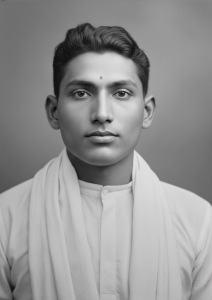
T.K. Madhavan, affectionately known as Deshabhimani Madhavan, was a beacon of social reform and political activism in early 20th-century Kerala. Born in 1885 in Karthikappally, Alappuzha, into a prosperous Ezhava family, Madhavan was exposed to the stark social inequalities of his time from a young age. This early awareness ignited his passion for justice and equality, setting him on a path to become a pivotal leader in Kerala’s reformation movement.
Madhavan’s journey as a reformer gained momentum in 1917 when he took on the role of editor for the influential newspaper Deshabhimani. Through this platform, he voiced the struggles of the oppressed and championed the rights of the marginalized. His leadership was instrumental in the Vaikom Satyagraha, a landmark movement that challenged the caste-based restrictions preventing lower-caste individuals from accessing public spaces around temples.
The Vaikom Satyagraha, which began in 1924, aimed to secure the right for backward classes to walk along the roads surrounding the Vaikom Sree Mahadeva Temple. This movement was a direct challenge to the deeply entrenched caste prejudices of the time. Madhavan, alongside fellow leaders like K. Kelappan and K.P. Kesava Menon, led peaceful protests and civil disobedience campaigns, even facing imprisonment for their unwavering stance. Their efforts eventually led to the opening of these roads to all communities, marking a significant victory against social discrimination.
Madhavan’s political acumen was further highlighted by his 1918 election to the Sree Moolam Praja Sabha, the legislative council of Travancore. Here, he passionately advocated for the rights of all individuals to worship in temples, regardless of caste, reinforcing his commitment to social equality.
A pivotal moment in Madhavan’s activism was his meeting with Mahatma Gandhi in 1921. Persuading Gandhi to support the Vaikom Satyagraha brought national attention to Kerala’s struggle against untouchability. Gandhi’s visit to Vaikom in 1925 galvanized the movement, helping to secure its success and inspiring similar efforts across India.
Tragically, T.K. Madhavan’s life was cut short on April 27, 1930. However, his legacy lives on through numerous memorials and institutions named in his honor, such as the T.K. Madhava Memorial College in Nangiarkulangara, established in 1964. Madhavan’s unwavering dedication to social justice and his strategic leadership in the fight against caste discrimination have left an indelible mark on Kerala’s history, inspiring future generations to continue the quest for equality and human dignity.










